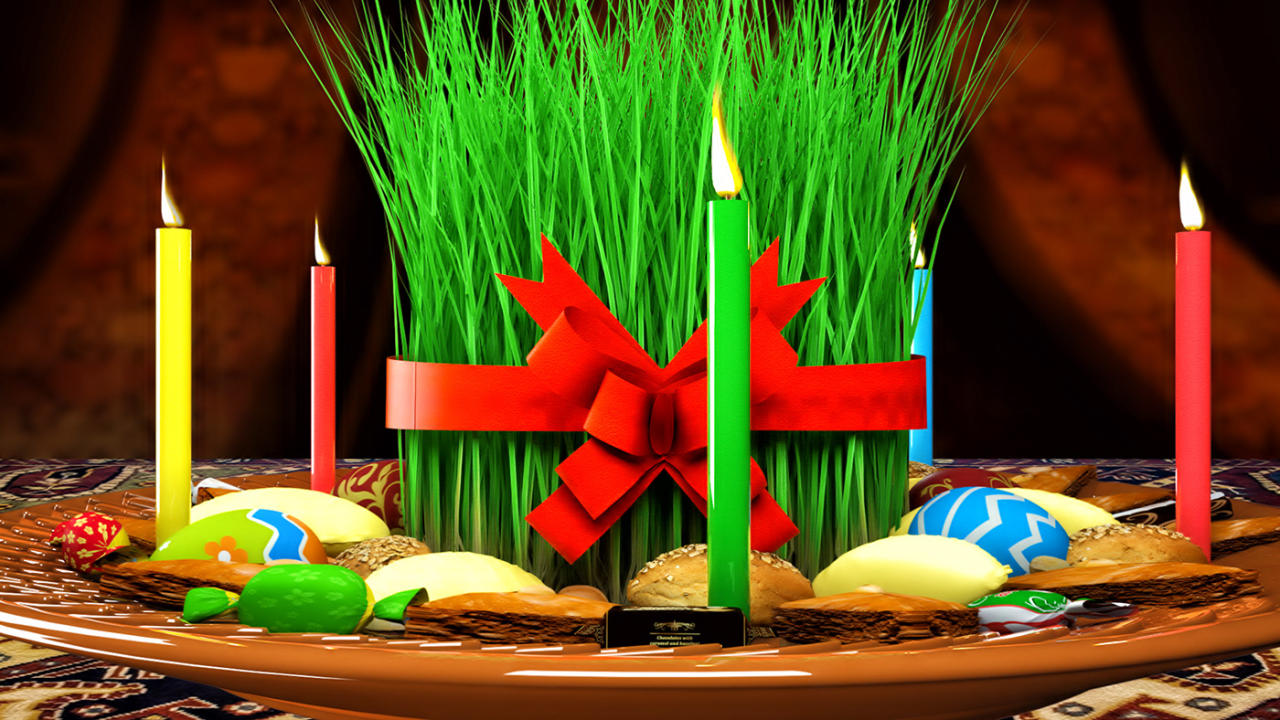Azerbaijan celebrates spring holiday Novruz

By Sabina Mammadli
Novruz is one of the most popular holidays of the Azerbaijani people, and it is celebrated by millions of Azerbaijanis all over the world.
However, it has been celebrated for almost 3,000 years by many cultures in Western Asia, Central Asia, the Caucasus, the Black Sea Basin, the Balkans, and South Asia. While Novruz is now predominantly a secular festival celebrated by people of all religions and ethnicities, it remains a sacred day for Zoroastrians, Baháʼís, and some Muslim communities.
The celebration heralds the entrance of spring and is seen as the start of a new year since Novruz literally means "New Day".
The festival is observed on the vernal equinox, which occurs on either March 20 or 21, when the lengths of day and night are equal.
It also marks the start of spring, according to astronomical terminology.
Novruz is a 5,000-year-old celebration that may be traced back to the Sumerians and Babylonians, with the oldest records of it reaching back to 505 BC.
However, the holiday atmosphere and activities begin much earlier than Novruz. Each of the four Tuesdays before Novruz is dedicated to the awakening of one of nature's elements: Su Chershenbesi (Water Tuesday), Od Chershenbesi (Fire Tuesday), Hava Chershenbesi (Wind Tuesday), and Torpaq Chershenbesi (Wind Tuesday) (Earth or Last Tuesday).
Novruz is rich with rituals and traditions.
Novruz is a family festival that many people celebrate with family feasts. As a result, considerable care is devoted to the holiday table setting. It comes as no surprise that one of the most prevalent customs is connected to table setup.
There should be seven different types of food on the table, each with a name that begins with the letter 'S', such as sumakh (a type of spice), sirke (vinegar), sud (milk), samani (grown wheat), sebzi (fried meat with greens), and so on. A mirror with painted eggs and candles should be on the table as well. The candle represents fire and brightness, while the mirror represents happiness.
The pastries that are special to Novruz are also symbolic of the sky, the sun, and the stars.
The round-shaped, golden goghal depicts the sun, while the half-circle-shaped shekerbura and its decorative surface patterns represent the half-moon. The diamond-cut form of pakhlava (baklava) with four angles is thought to represent the four corners of the earth. In some forms, the seven-fold thin pakhlava dough cut into diamond shapes and a hazelnut kernel atop the center symbolizes the sky and stars, respectively.
Each area of the country has its unique recipe for pakhlava. It also comes in several shapes: traditional baklava is diamond-shaped, renowned Sheki baklava is square, and in Gabala it is triangular and called "uchgulag".
--
Follow us on Twitter @AzerNewsAz
Here we are to serve you with news right now. It does not cost much, but worth your attention.
Choose to support open, independent, quality journalism and subscribe on a monthly basis.
By subscribing to our online newspaper, you can have full digital access to all news, analysis, and much more.
You can also follow AzerNEWS on Twitter @AzerNewsAz or Facebook @AzerNewsNewspaper
Thank you!
